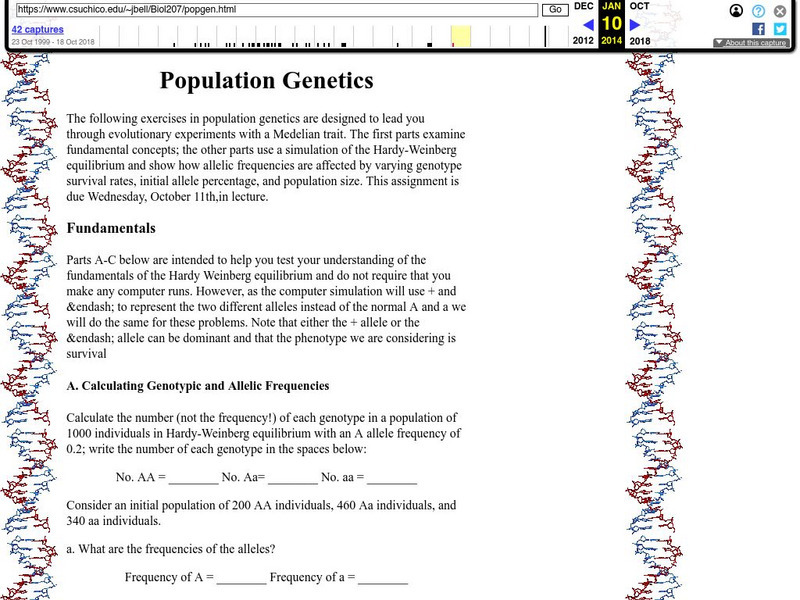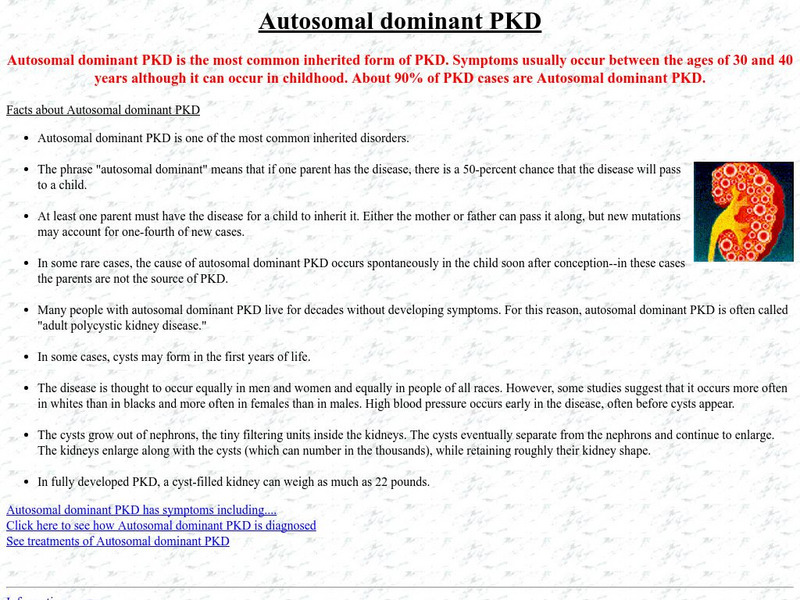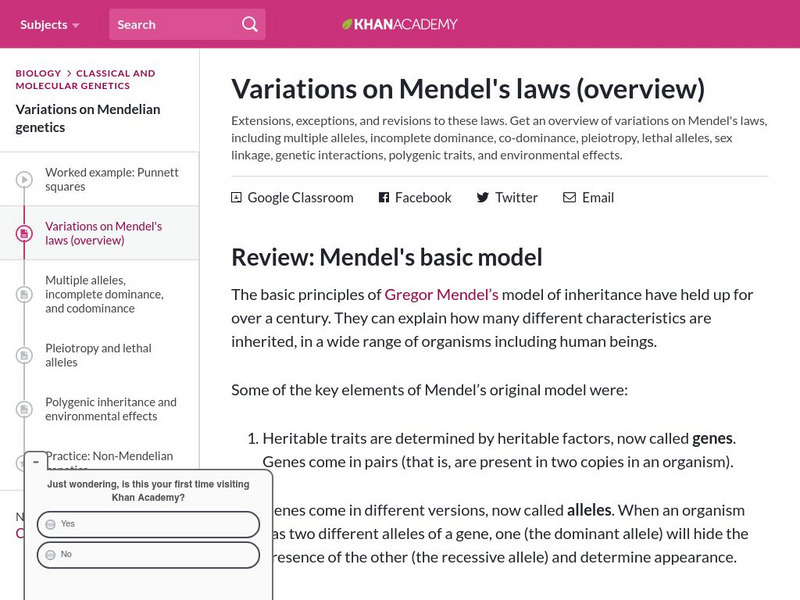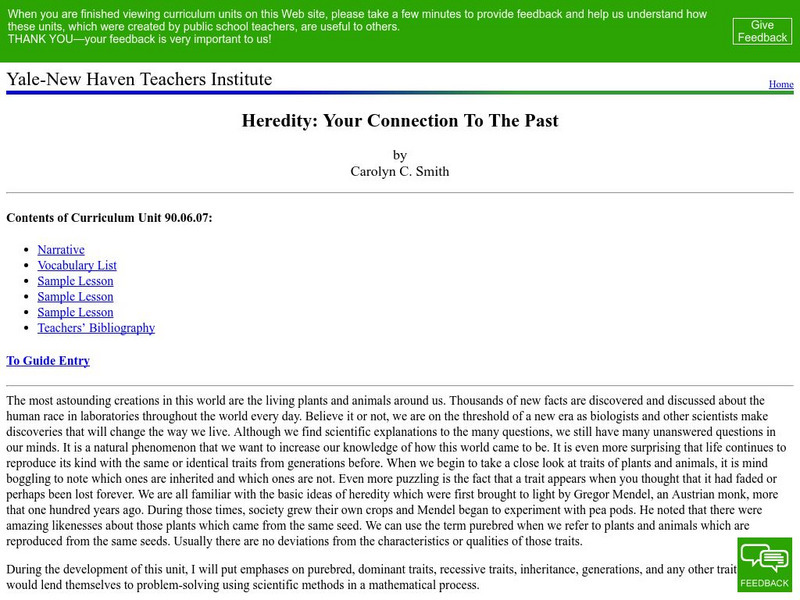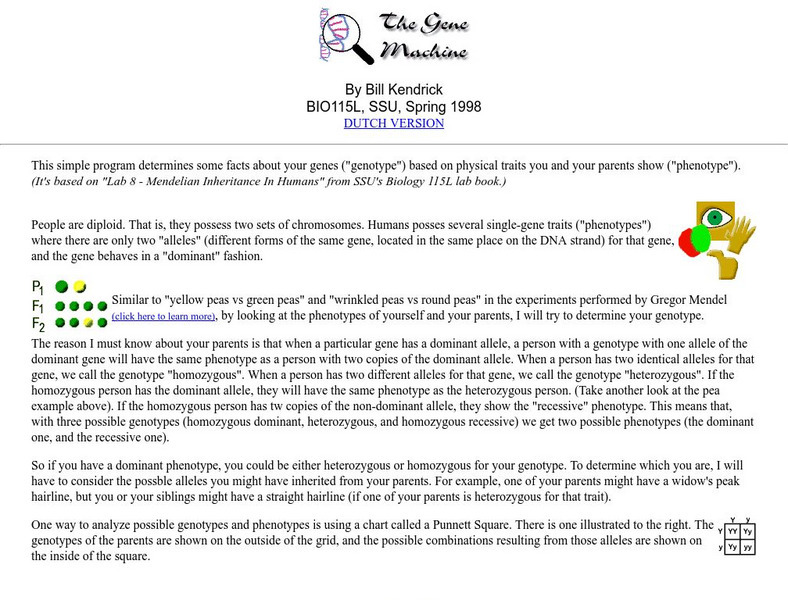TeachEngineering
Teach Engineering: What's Dominant?
In a class discussion format, the teacher presents background information about basic human genetics. The number of chromosomes in both body cells and egg and sperm cells is covered, as well as the concept of dominant and recessive...
University of Hamburg
University of Hamburg: Deviations From Mendelian Laws And: What Is the Meaning of Dominance?
Upper level discussion of several of Mendel's experiments and laws.
BiologyWise
Biology Wise: Dominant and Recessive Traits in Humans
Explains what dominant and recessive traits are and how they work, and provides a list of single gene traits with the degree of manifestation if they are dominant or recessive. Also discusses co-dominance, incomplete dominance, polygenic...
California State University
Csu Chico: Population Genetics
This is a group of Mendelian Genetics exercises that are designed to show the evolution of a trait within a population. The site covers instruction in calculating genotypic and allelic frequencies, determining dominance, the...
Other
Polycystic Kidney Disease: Autosomal Dominant Pkd
A good example of an autosomal dominant disorder occurring in polycystic kidney disease. Also supplies a little background definition to the process.
Khan Academy
Khan Academy: Variations on Mendel's Laws (Overview)
Article reviews Mendel's basic model of inheritance then provides an overview of variations on Mendel's laws, including multiple alleles, incomplete dominance, co-dominance, pleiotropy, lethal alleles, sex linkage, genetic interactions,...
OpenStax
Open Stax: Anatomy & Physiology: Patterns of Inheritance
Students learn about patterns of inheritance including genotype and phenotype, and then learn about the inheritance of autosomal dominant and recessive and sex-linked genetic disorders.
Yale University
Yale New Haven Teachers Institute: Heredity: Your Connection to the Past
An indepth introduction to genetics as a whole with sample lessons, vocabulary, and bibliography. From the Yale-New Haven Teachers Institute.
TeachEngineering
Teach Engineering: Mice Rule! (Or Not)
Students explore the relationships between genetics, biodiversity, and evolution through a simple activity involving hypothetical wild mouse populations. First, students toss coins to determine what traits a set of mouse parents...
Estrella Mountain Community College
Estrella Mountian College: Introduction to Genetics
This site explains genetic beliefs before and after Mendel, and also includes a section on Mendel himself and his experiments, entitled, "The Monk and his Peas".
TeachEngineering
Teach Engineering: The Benefits of Biodiversity
First, students toss coins to determine what traits a set of mouse parents possess, such as fur color, body size, heat tolerance, and running speed. Next they use coin tossing to determine the traits a mouse pup born to these parents...
Other
Biology Project: The Gene Machine
Site allows users to learn interesting information about their genes based on his/her physical traits. Provides a brief explanation of how a person's genotype is determined.
National Health Museum
Access Excellence: Hardy Weinberg Equilibrium
This site explores what Hardy-Weinberg Equilibrium is, and how teachers can explore this topic in their classrooms. Content includes background information on this topic, as well as numerous learning activities.
Famous Scientists
Famous Scientists: Gregor Mendel
Find out how Gregor Mendel's experiments led him to be known as the father of genetics.
PBS
Pbs Learning Media: Mendel's Laws of Genetic Inheritance
This interactive activity, adapted from the Dolan DNA Learning Center, uses Punnett squares to illustrate Mendel's laws of inheritance and how a particular gene combination results in a 3-to-1 ratio of dominant-to-recessive traits.
Other popular searches
- Recessive & Dominant Traits
- Survey Dominant Traits
- Dominant Traits Definition
- Dominant Traits Mussels
- Dominant Traits Defination
- Dominant Traits Example
- Whats Is Dominant Traits


